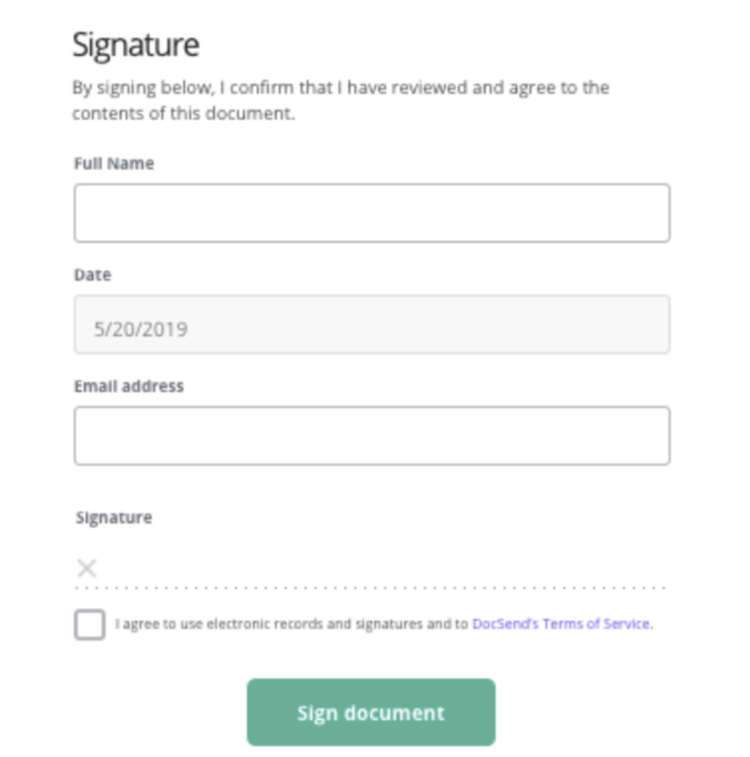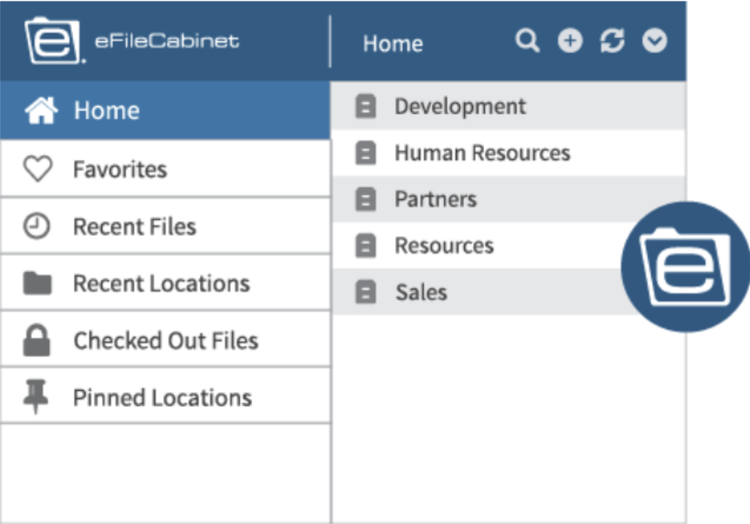It’s time for your business to go paperless and join the electronic world of file management to get your documents into the cloud. Make it happen by making sure you’ve got the best digital filing system for your company’s needs and a clear idea of your priorities.
Here are our five steps to creating and organizing an electronic filing system in your small business:
- Create a document retention plan
- Choose the right file management software
- Figure out an implementation plan
- Set up storage
- Schedule ongoing maintenance
What to consider when setting up an electronic filing system
Before you get started setting up an electronic filing system, you need to keep in mind some vital document management best practices and considerations.
1. Your budget
When you choose document management software, make sure it realistically fits within your budget. Luckily, there are several affordable e-filing systems out there.
2. The learning curve
Aside from system costs, it’s important to consider your skills and the tech-savviness of the rest of your office so that you schedule yourself (and your team) accordingly.
3. Number of users
Some systems charge based on the number of users, while others have either user minimums (or maximums) to meet. Make sure you know just how many people will be using the software (or a near-enough approximation) before purchasing it.
How to set up an electronic filing system
After you prep everything, you’re ready to start your new path of computer filing your business documents.
Step 1: Create a document retention plan
The first step is just a little bit more pre-work. Before you start using the electronic filing system, set up rules and goals. You will need to lay out a general plan in a few areas:
Creating documents
Set specific rules for creating and tracking files that your business creates, such as invoices, proposals, contracts, and marketing materials.
You may need to create standard templates for your documents or at least set up guidelines of components. Do you use an existing framework? Do you create something new? It depends on what you have in place and what you have in mind.
Sharing documents
When it is time to share documents internally (or externally), you should decide on some rules and parameters before instituting a new system. For example, what documents are considered sensitive and which ones can be shared with others in your business?
When it comes to sharing, make sure you know what kind of security you want, whether it is "view only" links, limited editing, email verification, etc. Since collaboration by nature invites many cooks into the kitchen, just be sure you have a plan for clearance levels.

With some systems, you can opt to require email verification for sharing access. Image source: Author
Storing documents
Most systems charge based on storage amount, so having a ballpark of your total data needs is important. You also want to make sure you are purposeful in making this e-storage switch. Now is an excellent time to clear the clutter and be sure you have an easily searchable digital database.
What groups or folders will you want? How do you plan on categorizing documents? Come up with a general filing plan before diving into filing software.
Step 2: Choose the right file management software
Once you have a plan for streamlining your digital crossover, you can begin to look into buying software. Knowing your price range, approximate storage amount needs, and user count will come in handy when you compare offerings. You will also want to make sure your software has a few key features.
Ease of use
Simply put, you will want the front-end user experience to be seamless and intuitive. Setting up the framework should be minimally invasive for you, but it should also accessible enough that users will be encouraged to adopt it.
Sync
Several software platforms offer some version of offline sync or a desktop app. For example, eFileCabinet has the Sidekick app that you can use to upload files directly from your desktop.
At the same time, Microsoft Box lets you work fully from your desktop without ever opening a browser, as uploads and edits are synced in real-time.

eFileCabinet’s Sidekick app lets you sync files from your desktop. Image source: Author
Easy integration
A good electronic filing system shouldn't disrupt daily to-dos. It has to integrate well with current apps and tools, including email, web navigation, etc. Electronic filing should make life easier by blending seamlessly into your company's day-to-day.
Step 3: Figure out an implementation plan
After deciding on your plan and software, it’s time to implement. All the prep work you did should pay off once you get to this step.
Communicate
Your staff should be aware of the upcoming change and know the general guidelines around document sharing, permissions, storage rules, etc. Following standard procedures, and naming conventions should also help when employees start using the new system.
You’ll also have to be sure that everyone who has access to documents within your organization follows through by consistently naming and storing documents appropriately.
Permission levels
Users should have levels of permissions, and ownership should be assigned accordingly. You’ll want to have clarity around document access and editing abilities. Different people should have different access levels, depending on their roles and skills.
Define rules
When people start using the filing system, they should have set expectations and guidelines for doing so. The rules are to avoid confusion around sharing, to prevent multiple copies being made of the same document, and for file tracking. Be clear about expectations for using the software.
Match your systems
When you transfer your paper files to an electronic format, you should have a system in place. You likely still have a filing system in your office for recording and categorizing that you’ll want to mirror somewhat closely when switching to digital document management.
By paralleling your organization systems, you’ll keep things easier.
Step 4: Set up storage
Now it’s time to put your storage plans into place. Make sure you keep a few things in mind as you upload, store, and share.
Stay organized
Set up categories and specific rules to avoid creating duplicates, but also so that files don't get lost. A digital filing system should be intuitive and shouldn't disrupt workflow. You can categorize by department, organize by chronology or name, or find another system that works for you.
Set up subfolders
Folders within folders keep your work super organized. Subcategories allow you to control the chaos and make it easier to find specific files.
Naming conventions
Be consistent with naming conventions (such as date first or ending a document with the last editor’s initials) and files to make searching and categorizing much simpler.
Step 5: Schedule ongoing maintenance
Once your digital filing system is up and running, keep the process flowing smoothly. It’s easy for an electronic ecosystem to become cluttered, just like a physical one, if left alone and unmaintained.
Scheduled maintenance checks
You don’t need to do this on a daily or even weekly basis, but it’s a good idea to set up recurring times to do a health check and declutter. Make sure you check that documents follow name conventions, and ensure that storage is accurate.
Archiving documents
Archiving documents is an integral part of file management. Too much paperwork can overwhelm and confuse your staff, so it's best to archive old files.
During this process, you're not deleting documents entirely and therefore losing data. Still, you do remove extraneous files that may be confusing or that make searching for documents difficult.
Setting up streamlined systems
As you get ready to take on a digitally managed system, you will find that your office life becomes less cluttered. You'll go through a little bit of a learning curve to migrate files online, but with time, it will become easier to manage and maintain.
Our Small Business Expert
We're firm believers in the Golden Rule, which is why editorial opinions are ours alone and have not been previously reviewed, approved, or endorsed by included advertisers. The Ascent does not cover all offers on the market. Editorial content from The Ascent is separate from The Motley Fool editorial content and is created by a different analyst team.